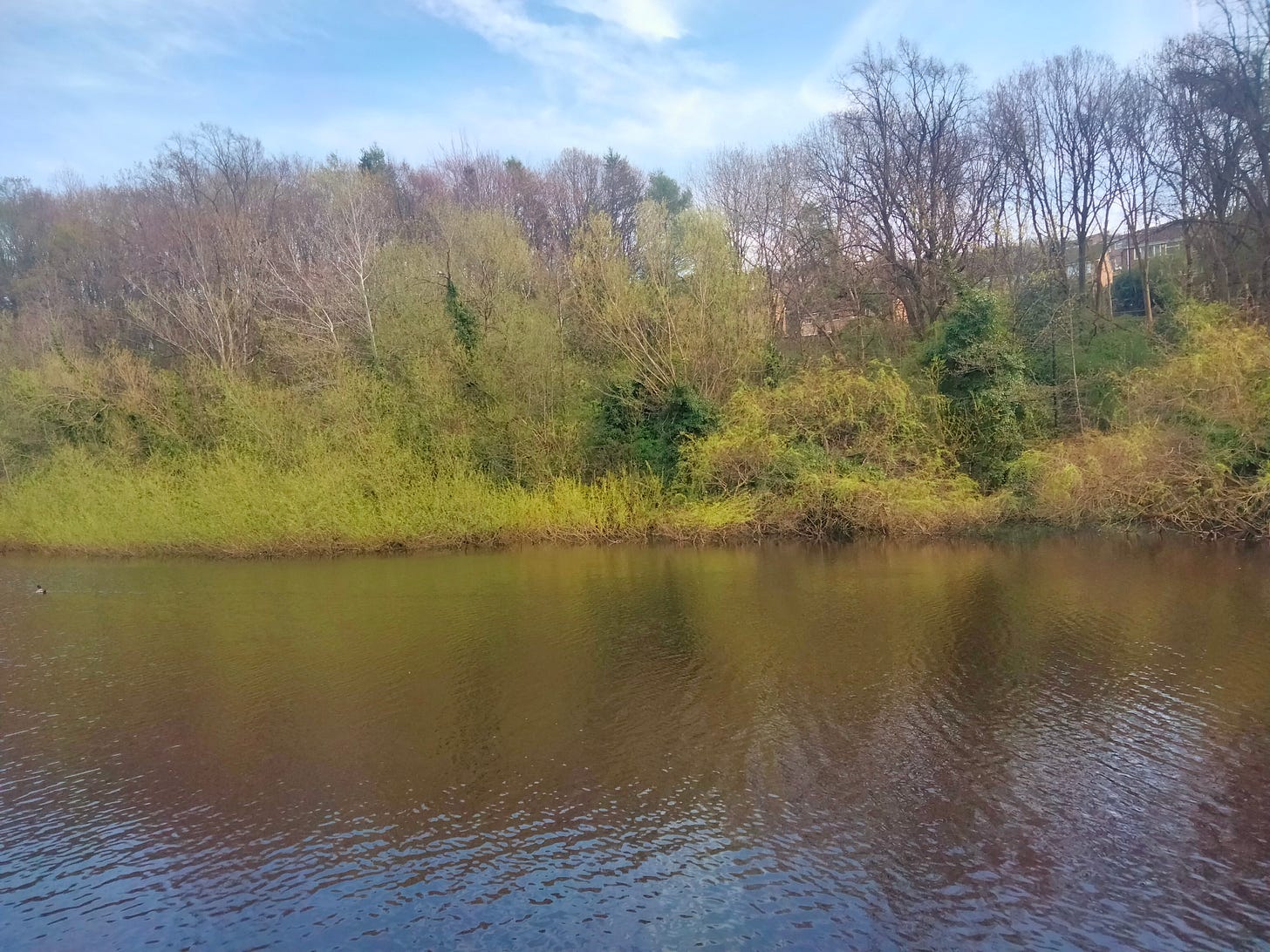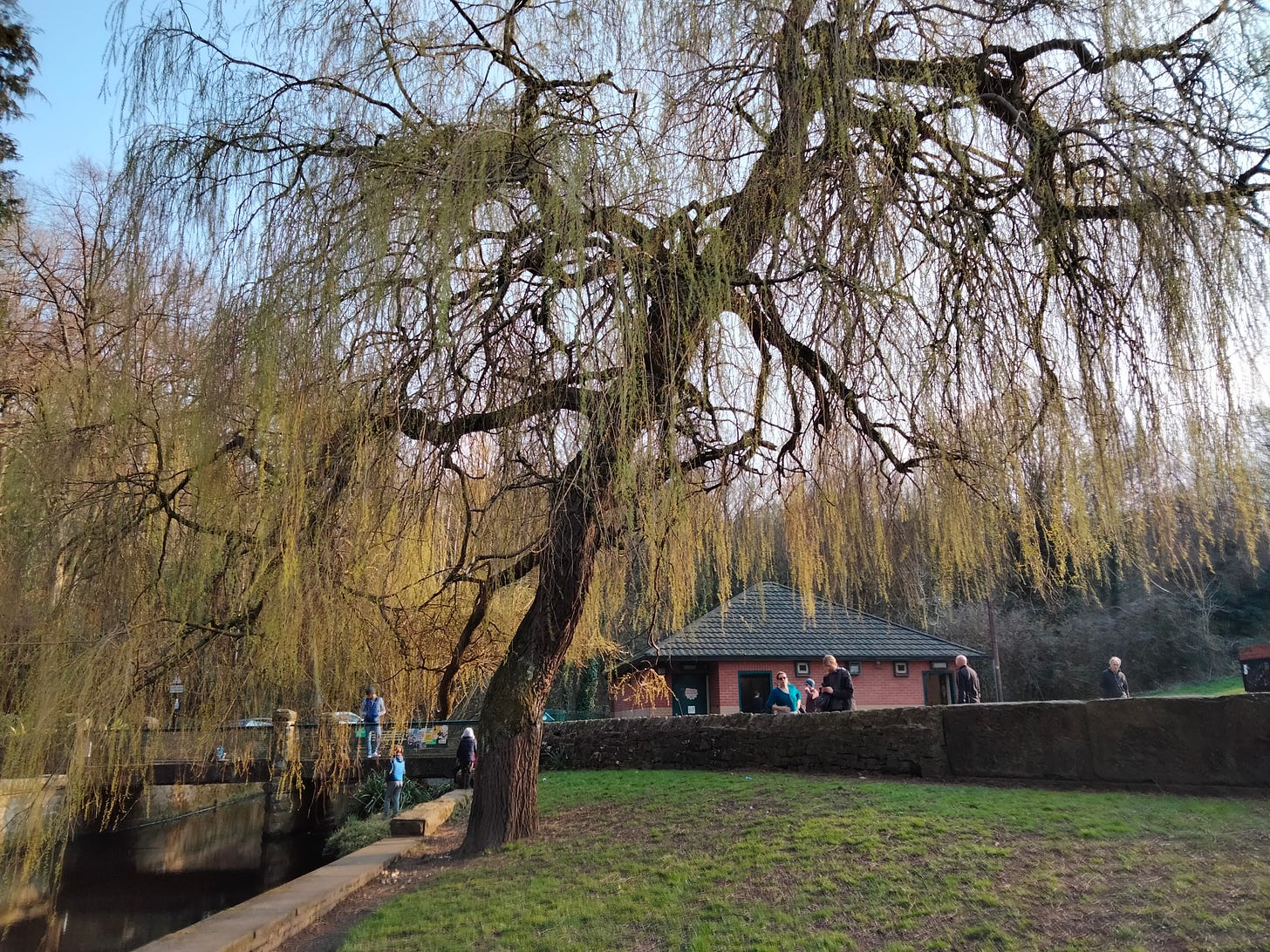The warm sunny days we have had recently feel a long time ago now with today’s cold, showery winds, but I’m sure this is someone’s ideal weather for enjoying nature and blowing the cobwebs away.
On Saturday, under beautiful, blue skies, I met Kath Walsh at Malin Bridge tram stop. She is co-running the Nature Writing Walk and Workshop with me on Sunday 27th April, starting at 10am at Malin Bridge tram stop and finishing with a session of writing and reflecting at the Rivelin Park Cafe.
Kath is a foraging and medicinal plant expert and walks with her are always filled with exciting discoveries and tiny details. Right by the tram stop, Kath found a row of maple trees just coming into leaf, with tiny flowers which are edible. Don’t eat them from the middle of a busy road junction though!
We chose the Rivelin Valley because it’s one of the most magical places in Sheffield, a former site of industry. Nature has transformed the old millponds, weirs and ruins into a landscape that looks like an enchanted forest from the Lord of the Rings at times. It all depends on how you see it.
Crossing the road, Kath led me down a sturdy metal ladder (it’s not as scary as it sounds) onto the riverbank at the confluence or watersmeet between the Loxley River and the Rivelin. It feels special to be at the place where these two rivers join, soon to pour themselves into the River Don, behind a car dealership. But the confluence at Malin Bridge has an almost spiritual atmosphere, a haven for wildlife, perhaps feeling poignant in remembrance of the Sheffield Flood in 1864, which devastated this area.
There are edible plants down here too, nourished and sometimes battered by the water, as well as plants that have escaped from gardens, cherry and alder trees, to name just a few. I’m glad I finally got down there.
We passed old weirs and remains of old mills, peering through the gates at the ruins of Mousehole Forge, which once exported anvils all over the world. The Rivelin Valley (one of five rivers coming together in Sheffield) was once one of the most intensely industrial in the world. The Rivelin Valley Conservation Group has a fantastic website, and by each old weir or mill site, there’s a post with a QR code on it which will take your smartphone to information and old photos of the location you are in.
We passed fishermen (they almost always seem to be men! I know female fishing fans are out there though!) and families sunbathing and paddling near the café. The ice cream van was doing a roaring trade on Rivelin Valley Road. This bit of the walk is always the most popular, with a water play park (not open yet for the summer), and a large playground. Unfortunately, the large weeping willow tree outside the cafe blew over in the winter earlier this year which is quite sad, so I’ll never have the experience of standing under its cascading leaves again. I know I always take photos of trees for a reason.
We ended our walk at the atmospheric ruins of Roscoe Wheel, which is one of my favourite places on the trail to explore, reflect and wonder. You can also play pooh sticks under the lovely stone bridge.
The Rivelin will always be important to me, partly because it’s a short walk from home, and spending time here is always significant - wildlife discoveries on walks alone, such as watching a dipper swim-flying under water in search of food or tracking the grumpy resident heron. I’ve had solitary snowy adventures and scorched in summer heat. Further upstream, I’ve swum against the current in the Rivelin’s own plunge pool, and had meaningful chats with friends as we’ve walked along. Last year took a client from work for a memorably messy ice cream in the cafe. I think that’s why it’s important to so many people from Sheffield and beyond. At least part of it is accessible to everyone.







